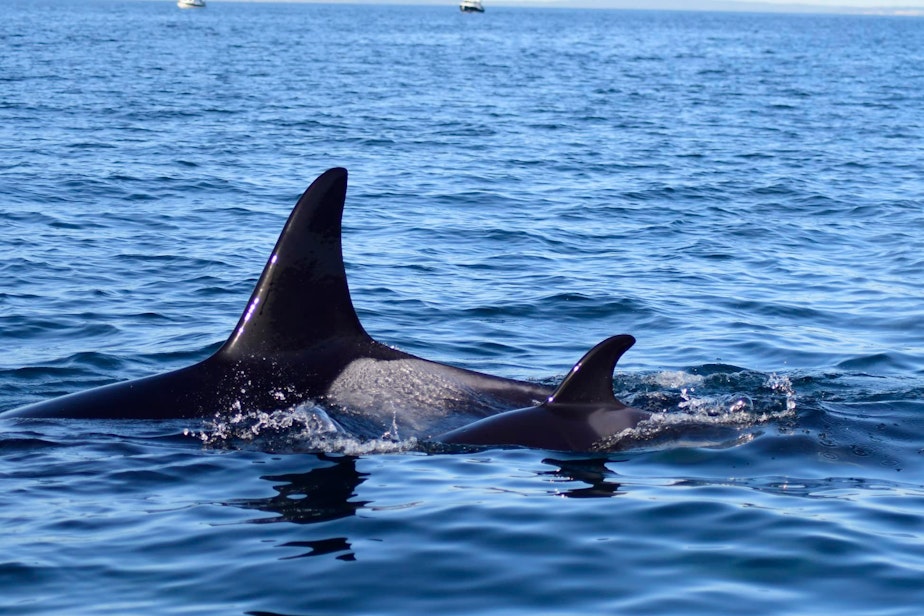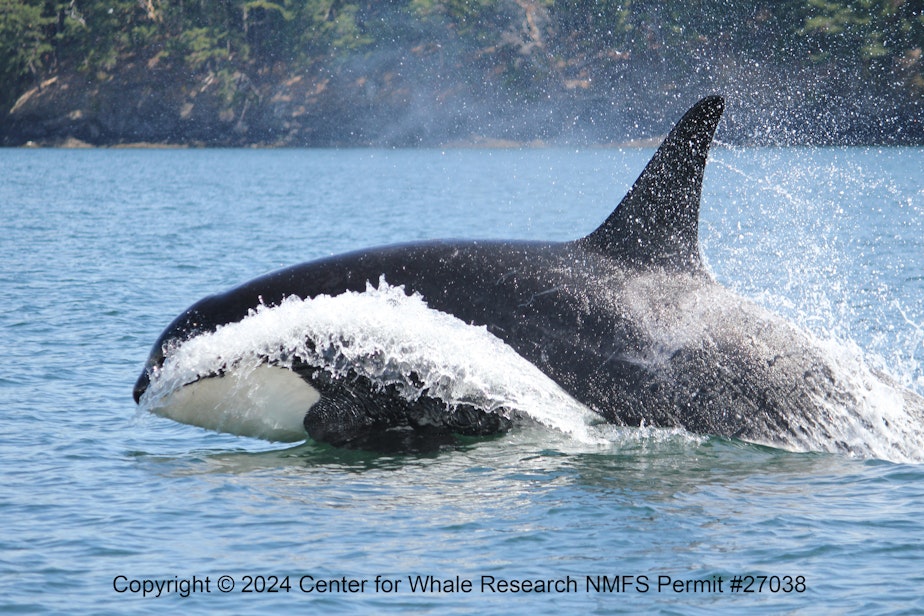Endangered Northwest orca population drops as 3 males die

Three members of the Northwest’s population of endangered orcas died over the past year.
The Center for Whale Research says the southern resident killer whale population dropped down to 73 individuals as of July 1, the date of the group’s 49th annual orca census.
Two adult males, ages 22 and 32, died, and one male orca born in December lived only a few weeks.
RELATED: Endangered baby orca J60 missing, presumed dead
KUOW reported in December on the joy that beachgoers on Bainbridge Island expressed when they saw that newborn orca, later known as J60.
Visitors standing on the beach at Fay Bainbridge Park on Bainbridge Island marvel at a family of endangered orcas swimming just offshore on Dec. 26, 2023. Audio courtesy of Neil Davis.
“They’re really close, huh? You don’t need binoculars for that!” one beachgoer said.
“Oh! The baby!” another said as the tiniest of black fins sliced through the water.
RELATED: Newborn orca spotted near Seattle off Bainbridge Island
Now, researchers say that baby probably died less than a month after his birth.
“It never put on weight, and it disappeared,” said researcher Deborah Giles with the nonprofit Wild Orca.
Sponsored
Many young orcas do not survive to their first birthday. Many others die in the womb.
Researchers blame a shortage of Chinook salmon to eat, as well as noise and toxic water pollution.
“There cannot be an effective recovery of the [southern resident killer whale] population without an increase in this crucial resource,” according to the Center for Whale Research.

“These animals are chronically hungry,” Giles said. “The moms are not as well-fed during gestation as they should be, and they probably lead to complications for the calf.”
Sponsored
Orca mothers also pass concentrated doses of toxic pollutants, such as PCBs, stored in their fat on to their offspring in the womb and when they nurse.
RELATED: Shhh! The orcas can’t hear their dinner
Other factors may have played a role in this baby’s short life, which the Center for Whale Research called “strange and tumultuous” in a press release.
During his brief life, baby J60 was photographed swimming nuzzled up against four different female adults, leaving researchers unsure who his mother was.
“It’s unclear whether this was a case of calf rejection, an inability of the mother to properly nurse the calf with other females attempting to help, or kidnapping,” according to the center’s press release.
Sponsored
"We've seen several times where reproductive age females try to take the new calf of another female, perhaps after losing one of their own," researcher Monika Wieland Shields with the Orca Behavior Institute said by email.
“I’m reluctant to say anything like ‘kidnapping,’” Giles said. “A lot of different females were present and behaving as if that could have been their calf.”
“It’s possible other females were coming in to try and aid,” she said. “We’ll never know.”
Scientists off the west coast of Iceland spotted a newborn pilot whale swimming in the mother-calf position next to a female orca in 2021. The researchers said they didn’t know how the interspecies pair came to bond but told the CBC there was a “decent chance” the fish-eating orca abducted the calf from a group of pilot whales.
Giles said at least five southern resident orcas had pregnancies that appeared to end in miscarriages in 2023.
Sponsored
“The tragedy is that these females are getting pregnant but not able to give birth to babies that live,” she said.
In better news for the southern residents, another orca was born in September.
RELATED: Why the Salish Sea's new baby orca surprised researchers
Researchers told KUOW in late September that this baby appears to be bonding with its mother and nursing.
For now, the endangered southern resident killer whale population is at 74.




